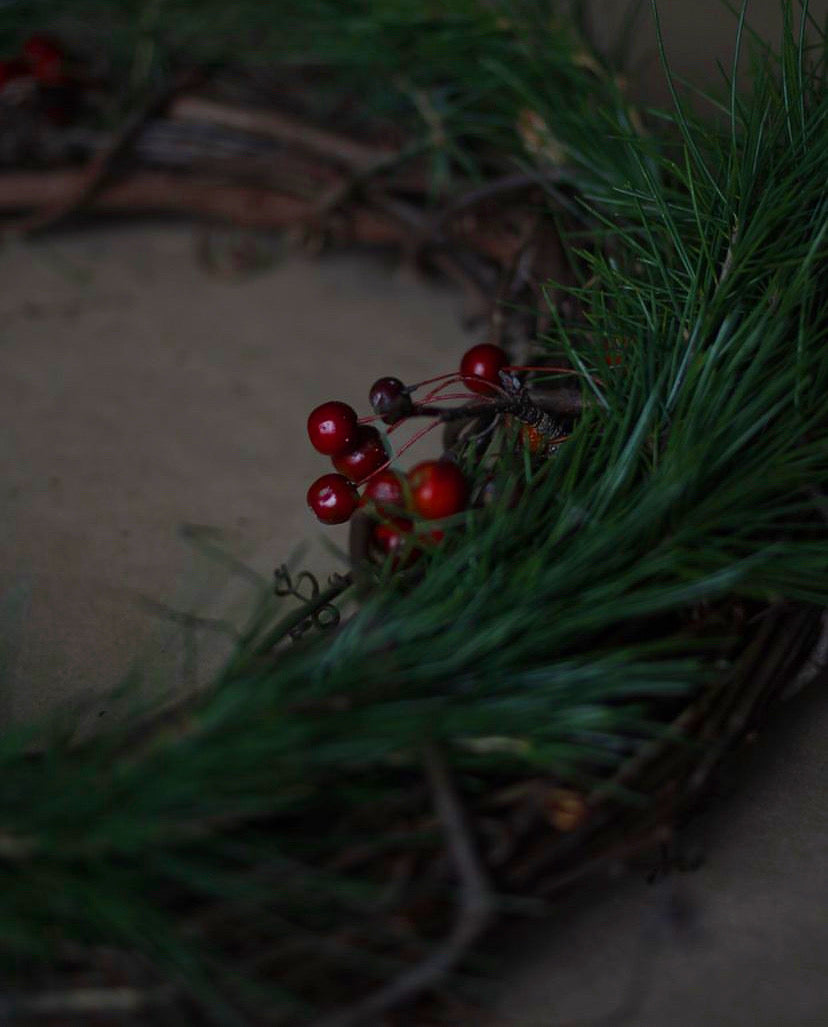Welcome to the decent of Autumn
As the gardens are tucked in for winter and the leaves have begun to layer the ground we turn to foraging for our plants and materials. Gathering first the boughs of pine and the black walnuts that have fallen to the ground before reaching for the branches; infusing their bright citrusy needles in teas and cleaners and finding the deep pigment and strong tannins in the flesh of the walnut. Bright gems of the rosehip is a fortune to find and a vital source of vitamin c, among other qualities, making it a wonderful addition to the autumn gathering while we remembering to leaving plenty for the birds.
In this blog post, we are sharing the importance of sustainable wildcrafting and how it can help preserve our natural resources for future generations.
What is sustainable wildcrafting?
Wildcrafting, also known as foraging, is the practice of gathering plants and herbs from their natural habitat for various purposes. It has been an integral part of human history, providing us with food, medicine, and materials for thousands of years. However, as our population grows and our ecosystems face increasing pressures, it is crucial to approach wildcrafting in a sustainable manner.
Sustainable wildcrafting is the practice of harvesting plants and herbs in a way that ensures their long-term survival and minimizes negative impacts on the environment. It involves taking only what is needed, leaving enough plants to regenerate and support the local ecosystem. Sustainable wildcrafters also prioritize ethical considerations, such as respecting private property rights and obtaining proper permits when necessary.
Preserving biodiversity
One of the key benefits of sustainable wildcrafting is its role in preserving biodiversity. By harvesting plants responsibly, we can help maintain the delicate balance of ecosystems. When wildcrafters take only a portion of the plants, it allows the remaining population to continue growing and reproducing. This ensures the survival of the species and prevents the loss of valuable genetic diversity.
Protecting endangered species
Many wild plants and herbs are endangered due to overharvesting and habitat destruction. Sustainable wildcrafting practices can play a crucial role in protecting these species from further decline. By following guidelines and regulations set by conservation organizations, wildcrafters can help ensure that endangered plants are not collected or traded illegally. This helps to safeguard their populations and promote their recovery.
Supporting local communities
Sustainable wildcrafting can also have positive social and economic impacts on local communities. In many regions, wildcrafting provides a source of income for rural communities, especially in areas where other economic opportunities are limited. By promoting sustainable practices, we can help create a more equitable and fair wildcrafting industry that benefits both the environment and the people who depend on it.
Sustainable wildcrafting is not only essential for the preservation of our natural resources but also for the well-being of our planet and future generations. By adopting responsible practices and supporting organizations that promote sustainable wildcrafting, we can ensure that we continue to benefit from the incredible diversity of plants and herbs while preserving their habitats for years to come.
By practicing sustainable wildcrafting, we can ensure that the ecosystems we rely on for these resources remain healthy and abundant for future generations. It involves gathering plants in a way that minimizes harm to the environment and allows for the regeneration and growth of the plants.
How can we practice sustainable wildcrafting?
There are several principles and practices that can guide us in practicing sustainable wildcrafting:
- Gather responsibly: When gathering plants, it is important to only take what is needed and to avoid over-harvesting. This means gathering selectively and leaving enough plants behind to ensure their survival and the survival of the ecosystem they belong to.
- Respect the habitat: When gathering plants, it is important to minimize our impact on the habitat. This includes avoiding trampling on other plants, disturbing wildlife, or damaging the soil.
- Learn from experts: It is important to learn from experienced wildcrafters and experts who can guide us in identifying plants, understanding their growth patterns, and teaching us sustainable harvesting techniques.
- Support local communities: Many wildcrafting practices are deeply rooted in local communities. By supporting these communities and their traditional knowledge, we can help preserve their cultural heritage and ensure the sustainability of wildcrafting practices.
Our commitment to sustainable wildcrafting
Keeping ecosystems healthy is our top priority. We understand the importance of sustainable wildcrafting and its impact on the environment. That is why our products that are made from sustainably foraged ingredients will be small batch and limited release.
By using sustainably foraged ingredients, we ensure that the plants and habitats from which they come are not overexploited. This allows for the regeneration and success of plant and animal habitats, contributing to the overall health of the ecosystem.
We believe that by practicing sustainable wildcrafting, we can not only create products that are good for our customers but also contribute to the preservation and conservation of our natural world.

